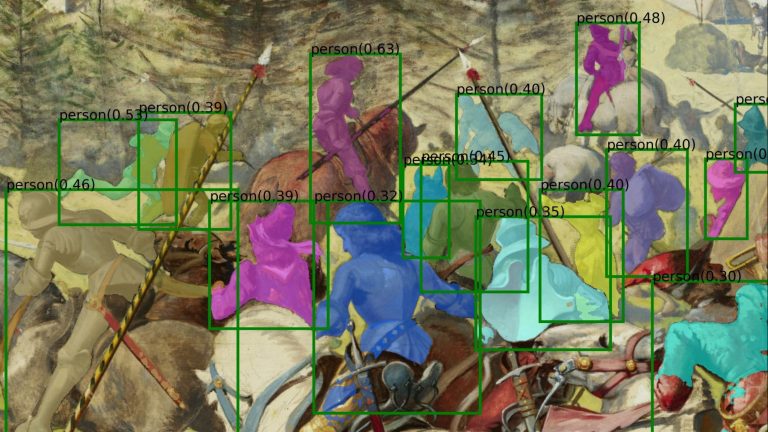Open Projects 2025/2026
If you are interested in one of the projects, please email the primary supervisor (in bold) and cc Prof Sarah Kenderdine. We would appreciate it if you could include a CV and/or a portfolio when contacting us.

Computer Vision Pipeline for Terapixel Visual Heritage
Master projects (DH/IC)
Supervisor: Tsz Kin Chau and Sarah Kenderdine
Project description:
Computer vision has been applied to very large and/or intricate visual objects with techniques such as tiling object detection, multi-resolution object detection, and bounding box fusion. While these techniques have seen noticeable success in domains such as remote sensing, pedestrian tracking, and pathology detection, they have yet to be developed in Cultural Heritage. The Panorama of the Battle of Murten is the world’s largest image of a single object, measuring 1.6 terapixels. Its physical size (10×100 m²) and the depicted elements, such as armaments, characters, heraldic representations, and costumes, are incredibly rich and intricate. An object detection pipeline for large, intricate visual heritage can deliver a rich inventory of these entities, potentially opening up a new epistemological opportunity to understand how and what the painting represents and transmits visually, through Topological Data Analysis or Topological Narratives (Rodríguez-Ortega, 2022).
The core objective is to identify a pipeline for object detection in intricate visual heritages with a thorough evaluation, where further downstream tasks such as Distant Viewing, Pose Detection, and Segmentation can follow. The student is expected to learn how to tackle the issues of lack of training data and domain shift problems common in cultural heritage.
Main activities:
- Development of a labelled dataset using the image of the Panorama of the Battle of Murten. The student will be given a list of classes of interest.
- Review and experiment with various multi-resolution object detection pipelines using state-of-the-art foundation vision models.
- The student is welcome to suggest improvements to the pipeline.
- Evaluate the performance of these pipelines using the developed dataset.
Prerequisite: Excellent Python Skills, Experience in Computer Vision
The project offers the opportunity to process the world’s largest image of a single object (1.6 terapixels) and experiment with newly emerged object detection methods using foundation vision models.
Reference:
Rodríguez-Ortega, N. (2022). Techno-Concepts for the Cultural Field: N-Dimensional Space and Its Conceptual Constellation. Multimodal Technologies and Interaction, 6(11), Article 11. https://doi.org/10.3390/mti6110096